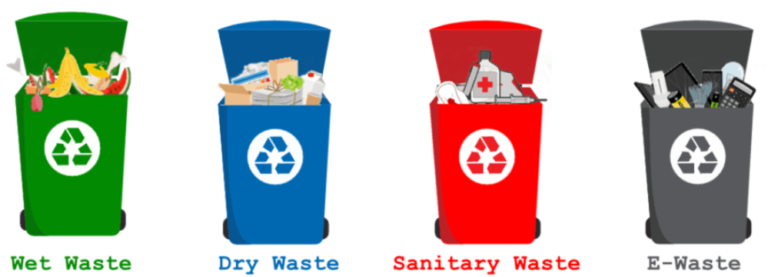
In the first two parts of the Menstrual Hygiene series, we’ve discussed different steps to ensure zero waste and the environment as the missing links in menstrual hygiene practice. In part one, we talked about the various alternatives to the traditional sanitary pad that have been introduced; these alternatives are significantly more sustainable and equally comfortable, while in the second part, we explored the relationship between menstrual hygiene practices, their environment, and their relationship with at least six SDG goals. In the third section, we look into various case studies of best practices for menstrual waste disposal mechanisms in India’s major metropolitan areas.
India generates an average of 113,000 metric tonnes of menstrual waste per year, the majority of which consists of sanitary pads, which can take up to 800 years to decompose. Using alternatives to the sanitary pad would be one way to reduce this staggering number, but it is not a simple transition to make. Many women lack the education and financial resources necessary to make the switch, and others may be too fearful to make the shift anytime soon. Therefore, another method of combating the issue is to dispose of existing period waste in a more efficient and sustainable manner, whether by incinerators or by segregation. Thankfully, many Indian cities have already begun to implement these methods. Let’s examine their methods and determine how other cities in India can begin to implement them.

Bangalore
Bangalore initiated waste segregation initiatives for the first time in 2016. They first enforced three-way segregation, where all sanitary waste (i.e., sanitary pads, diapers, and contraceptives) was disposed of in red bins and subsequently dealt with in incinerators, though this procedure encountered numerous obstacles. Even six months after the introduction, less than 25 percent of the refuse was collected, primarily due to individuals’ failure to segregate. Also, there was a severe lack of kiosks, and they were not present at all sections, causing sanitary waste to be combined with dry waste and transported to a landfill. In addition, the high cost of incineration made it problematic to continue over the long term.
However, as of 2023, Bangalore has installed devices that automatically separate waste into three categories, including sanitary waste. This eliminates human error during segregation and accelerates the process. In February of this year, the BBMP (Bruhat Bengaluru Mahanagara Palike) also decided to establish an in-house domestic sanitary waste processing facility. It will be placed in various processing facilities throughout the city before being incinerated or otherwise treated. In addition, they ensured that sanitary waste brought to dry waste collection centers would be removed and deposited in the correct location, thereby resolving a number of issues that plagued the initiative during its early years.







